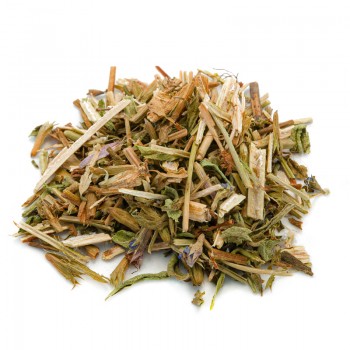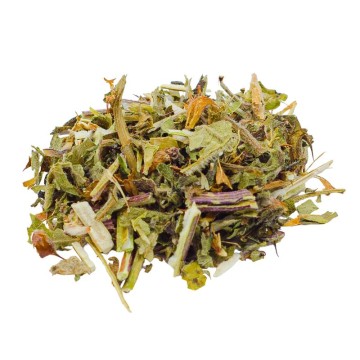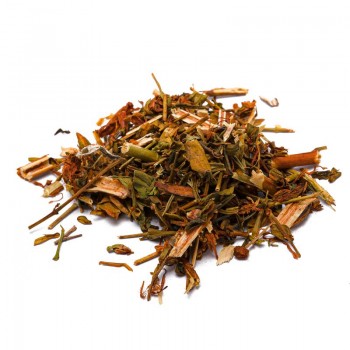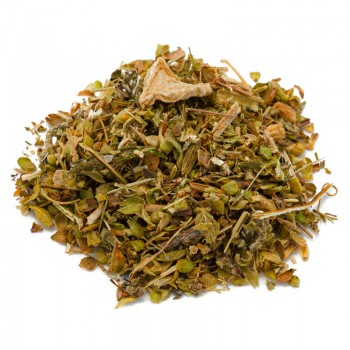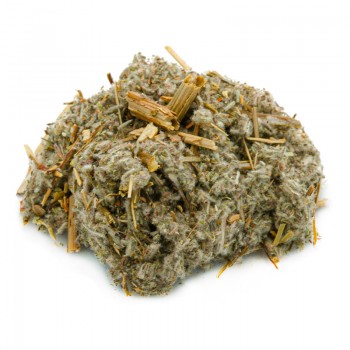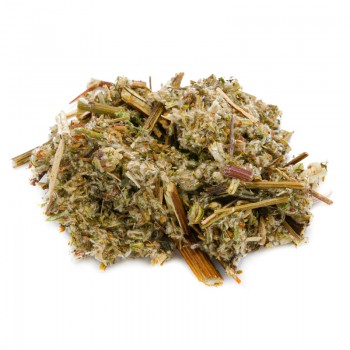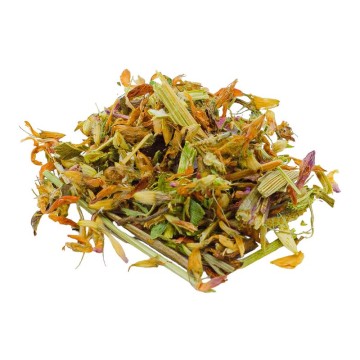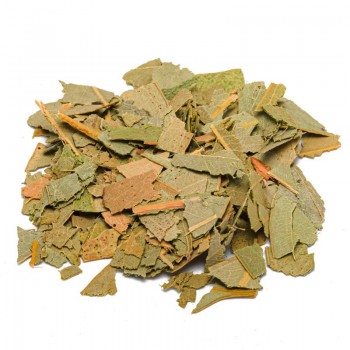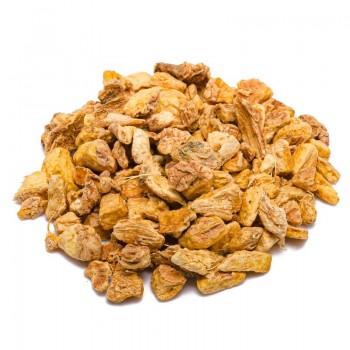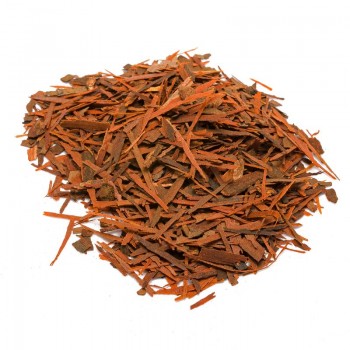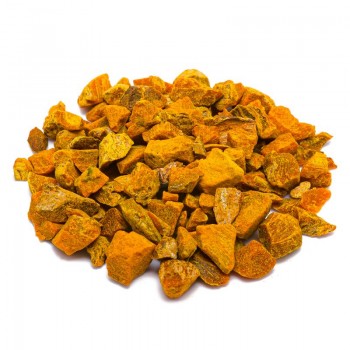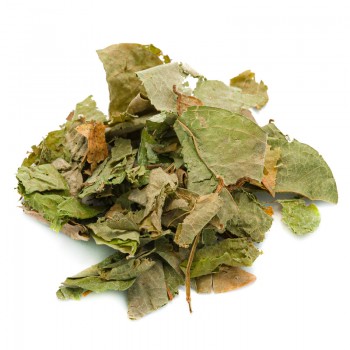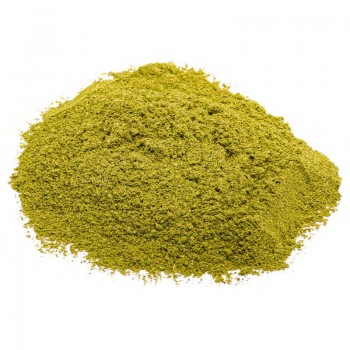Lapacho is an evergreen tree, also known by the Portuguese name of Pau D'Arco and by local names such as Taheebo and Ipe Roxo.
Its bark has been used for centuries by natives of South America, being rich in beneficial and mineral properties. Lapacho bark has been considered a natural antibiotic, having phytotherapy qualities that improve the body's defenses.
Lemon Lapacho Bark: properties and benefits
In the inner cortex there are several compounds called naphthoquinones , in particular lapachol and beta-lapachone, believed to be responsible for its benefits.
Tradition attributes to Lapacho antibacterial and antifungal properties ; the exact mechanism is still unknown, but it is thought to inhibit the processes that bacteria and fungi need to produce oxygen and energy. Its elements could inhibit the growth of bacteria in the digestive system (beta-lapachone is being studied against a staphylococcus), preventing ulcers and irritation.
Thanks to these capabilities, the lapacho bark is recommended in phytotherapy to counteract the attack on the organism of bacteria and fungi. Above all, for the well-being of the urinary tract. It is useful in case of candida and cystitis, and to soothe the symptoms of vaginal irritation through purification.
At the level of inflammation, it is believed that the cortex can prevent the natural response of the body from being triggered in several cases. We know that the state of chronic inflammation is linked to various pathologies, which is why the substances that can moderate it are beneficial for our body.
The active ingredients of Lapacho seem to inhibit the release of specific substances, which trigger an inflammatory response in the body - such as prostaglandin and nitric oxide , inflammatory mediators.
It can help soothe the symptoms of inflammatory conditions such as osteoarthritis, which causes swelling and stiffness in the joints.
The infusion has a laxative effect , since the consumption of Lapacho maintains the regularity of bowel movements. This purifying gift could help inhibit the absorption of dietary fats - even if side effects of diarrhea are possible, and therefore it is good to keep the recommended doses.
Furthermore, Lapacho contains iron, boron, copper and silver; elements useful to our body - in particular for the production of red blood cells, which carry oxygen throughout the body.
The infusion of this bark, in fact, was used in ancient times as a tonic and immunostimulant, to give strength and energy to the body. the taste of this infusion; helps to give an intense and pleasant aroma to the bark, together with lemongrass and rooibos.
Origins and History of cultivation
This tree was known to the South American natives of Brazil, northern Argentina, Paraguay, Bolivia and other countries.
Populations have used lapacho for medicinal purposes for thousands of years, and in fact the infusion of lapacho is also called the tea of the Incas. There are indications that its use may even precede the Incas.
This is an infusion that provides a number of health benefits, made using the inner bark of the lapacho tree. Red or purple lapacho was used.
The tribes have used the bark as a treatment for the stomach, skin, to treat inflammatory conditions, gastrointestinal problems, and prostate and urinary tract infections. Before the advent of the Spaniards, it was mainly used by the Guarani and Tupi-Nambo (Tajy tree) tribes, and in the high Andes, Callawaya, Quechua, Aymara and other tribes used lapacho (Taheebo tree).
For many populations, the use of Lapacho was as an immunostimulant and tonic - in fact it was called Tajy, which means to have strength and vigor, or the divine tree. dense, resistant, and hardly rots; for this it was used by the native South American populations to create hunting bows.
Plant and flowers
The Handroanthus impetiginosus tree is native to South America, part of the Bignoniaceae family.
Has several names - both botanics are popular. Botanically, among the many synonyms are Tabebuia avellanedae, Tecoma avellanedae and Tabebuia impetiginosa - several species native to the American tropical rainforests.
Commonly, it is also called ipê rosa or ipê roxo, lapacho rosa, lapacho negro, pau d'arc, and so on. It is a plant distributed throughout Central and South America, and is the national tree of Paraguay.
It can grow up to about 30 meters high, being a rather large tree although it grows slowly. It shows pink-purple flowers to bloom, which bloom before new leaves appear. The outer bark is brownish gray, hard and difficult to flay. The wood is yellowish, very hard and weather resistant. Great for creating beams or other structures, especially outdoors.
The Citrus limon, is the small tree that is very widespread and gives us the lemons, present in this infusion. It is part of the Rutaceae family, as an evergreen bush, about 3-6 meters tall.
The green leaves and are famous for their aroma, as are the white flowers above and reddish below. The lemon fruit is oval, with the famous yellow skin, which in some varieties thickens with maturation. Occasionally the fruits are seedless, and the pulp is decidedly acidic.
Citronella is a plant belonging to the Poaceae family, to the Cymbopogon genus. Also known as lemongrass, it is native to the tropical areas of Asia. It is a grass plant that grows in bushes, up to one meter in height. Rooibos or Aspalathus linearis is a plant from the Fabaceae family, which grows in South Africa. The leaves are used to create a tea, also called red tea, very popular in Africa and appreciated today for its antioxidant benefits.
Nutritional values of Lemon Lapacho
Lapacho is rich in essential minerals that help maintain health and vitality. Contains iron, calcium, magnesium, manganese, iodine, boron and barium.
Naphthoquinones - mainly lapachol and beta-lapachone - are present as active ingredients. Anthraquinones constitute another important class of compounds.
Many of the properties of lapacho may be due to a probable synergy between the two compounds. Lapacho also contains quercetin, xyloidone and other antioxidant flavonoids .
How to use the ingredients in the herbal tea or decoction of Lapacho
The ideal infusion is reached by adding approximately 3-5 grams of the Lapacho lemon mixture to a cup (250 ml) with water at 100 ° C. Leave to infuse for 10 to 12 minutes, before drinking the anti-inflammatory herbal tea.
For a good decoction of Lapacho bark: take a teaspoon of bark, add it to a cup of water, bring to a boil and let it go for about ten minutes. Then, remove from the heat and leave to infuse for another ten minutes. Filter and drink.
Lemon Lapacho: side effects and contraindications
Some side effects are possible, especially if the recommended doses are not respected.
These side effects include nausea, vomiting, risk of anemia. Since the properties of Lapacho can affect blood thinning, it should be avoided by those taking anticoagulant medications or aspirin.
It is an infusion not recommended for children, pregnant and lactating women.


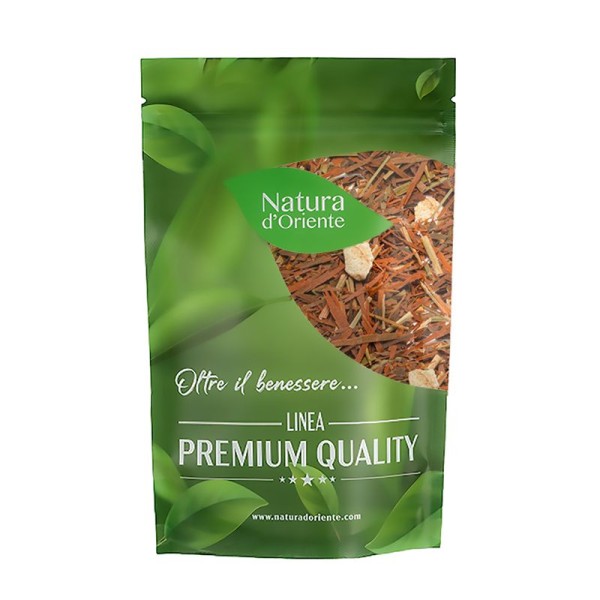








 No reward points for this product.
No reward points for this product.
